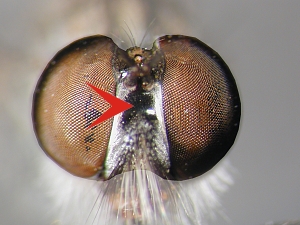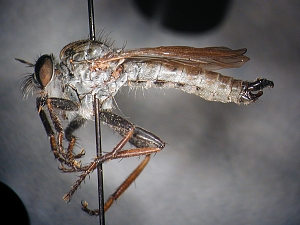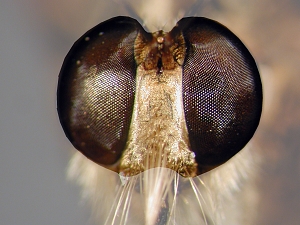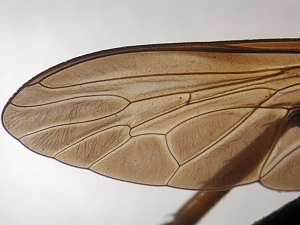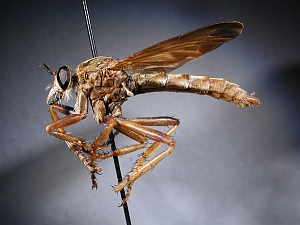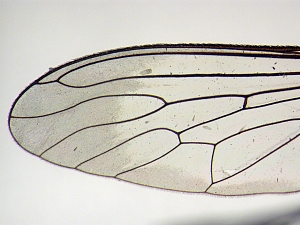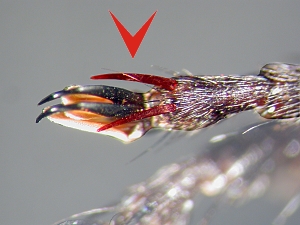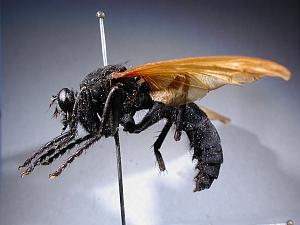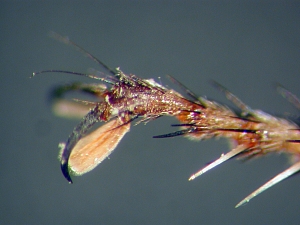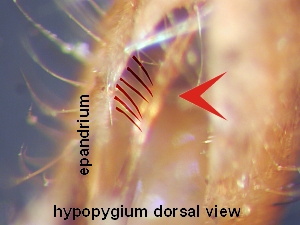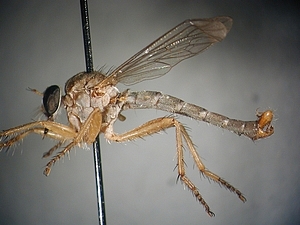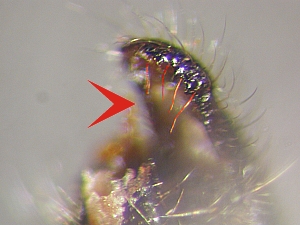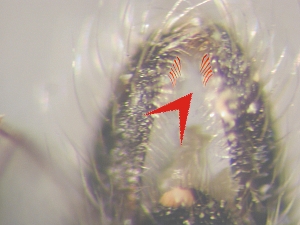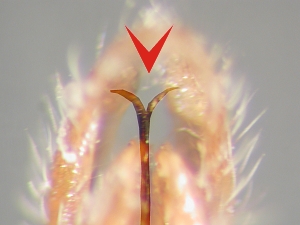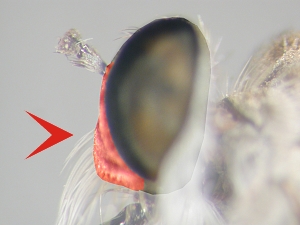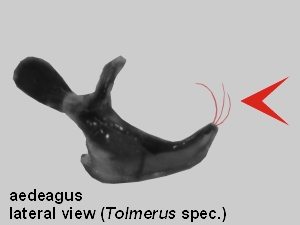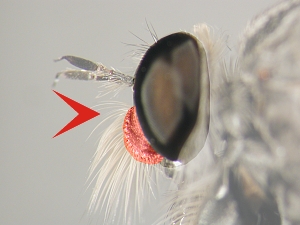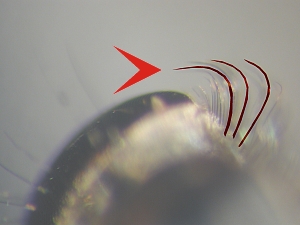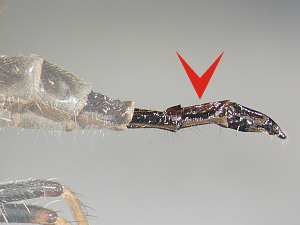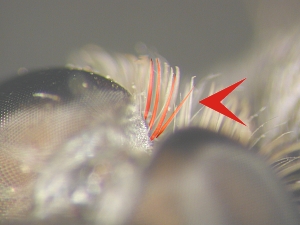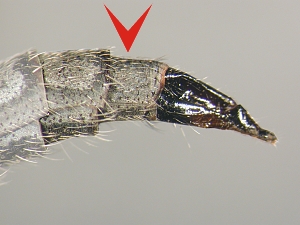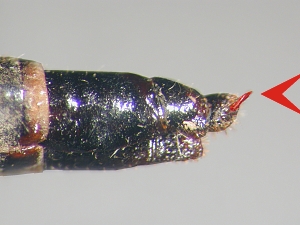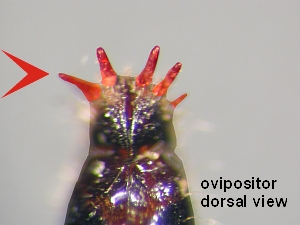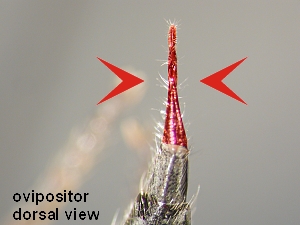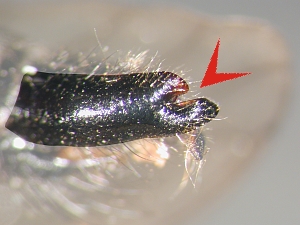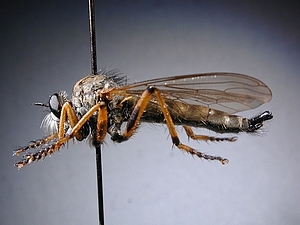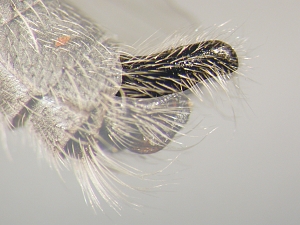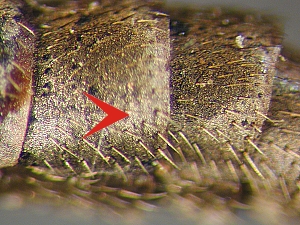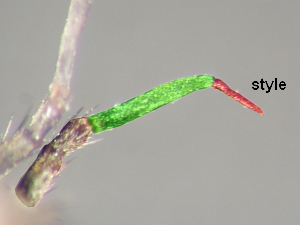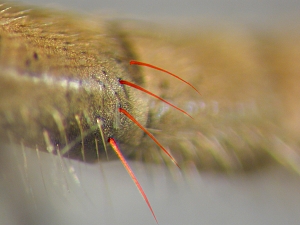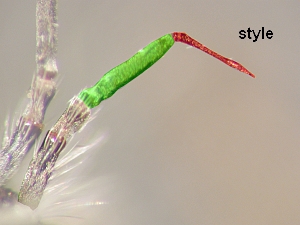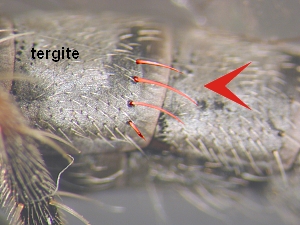Apocleinae
Asilinae
Dasypogoninae
Dioctriinae
Laphriinae
Laphystiinae
Leptogastrinae
Ommatiinae
Stenopogoninae
Stichopogoninae
Trigonomiminae
Asilinae
References: Artigas, J.N. & Papavero, N. (1997): The American genera of Asilidae (Diptera): Keys for identification with an atlas of female spermathecae and other morphological details. IX.1. Subfamily Asilinae Leach (including Apocleinae Lehr): Key to generic group. - Arquivos de Zoologia do Estado de Sao Paulo 34(2): 57-63; Sao Paulo. Martin, C.H. (1975): The generic and specific characters of four old and six new Asilini genera in the western United States, mexico and Central America (Diptera: Asilidae). - Occasional Papers of the California Academy of Sciences 119: 1-107; San Francisco.
Remarks: The following key is provisional and a revision is necessary.
| Face with shiny spot in the middle and only eye margins tomentose . . . . . Rhadiurgus Loew, 1849 [= Nigrasilus Hine, 1908] | ||
| Face completely covered with pubescence or only with a very narrow shiny longitudinal stripe. |
|
| Wings opaque yellowish. Body and legs yellowish . . . . . Asilus Linnaeus, 1758 | ||
| Other combination of characters. |
|
| Apical tarsal segment of foreleg with two strong bristles projecting over basal third or less of tarsal claws. Wings opaque, subhyaline along posterior veins. Tergites 8 of female pollinose . . . . . Wyliea Martin, 1975 | ||
| Apical tarsal segment of foreleg without strong bristles projecting over tarsal claws. Wings hyaline to opaque. Tergite 8 of female either polished or pollinose. |
|
| Inside surface of epandrium with a patch of several to many erect spines on the apical half or less . . . . . Polacantha Martin, 1975 | ||
| Inside surface of epandrium without a patch of erect spines on apical half, but with bristles along mesal margin of epandrium. |
|
| Aedeagal sheath bifurcate. Facial gibbosity weak . . . . . Dicropaltum Martin, 1975 | ||
| Aedeagal sheath single or triple-tuped. Facial gibbosity weak to strong. |
|
| Postocular bristles (occipital bristles) long and sharply, bent anteriorly in right-angled medially. At least two last segments anterior to ovipositor shiny black . . . . . Neoitamus Osten Sacken, 1878 | ||
| Postocular bristles (occipital bristles) either weakly bent or straight. Two last segments anterior to ovipositor tomentose. |
|
| Ovipositor with erect spines . . . . . Philonicus Loew, 1849 | ||
| Ovipositor otherwise. |
|
| Apex of epandrium notched apically on rounded apex. Aedeagal sheath a large single tube with 1 - 3 microtubes apically. Facial gibbosity restricted to lower third of face . . . . . Neomochtherus Osten Sacken, 1878 | ||
| Apex of epandrium without a notch, or at most with an emargination. Aedeagal sheath 3-tubed. Facial gibbosity well-developed or restricted to lower third of face. |
|
| Tergites 2 - 3 laterally with only short recumbent bristles. Style about 1/4 as long as postpedicel . . . . . Negasilus Curran, 1934 | ||
| Tergites 2 - 3 laterally with a few to a patch of hairs longer than the short recumbent bristles. Style usually longer. |
|
| Bristles laterally on incisures long, weak. Long, erect, weak bristles along mesal margin of epandrium, which is narrow. Body usually pale brownish . . . . . Prolatiforceps Martin, 1975 | ||
| Bristles laterally on incisures strong, short. Short, semirecumbent strong bristles along mesal margin of epandrium, which is broad. Usually greyish black or reddish brown species . . . . . Machimus Loew, 1849 & Tolmerus Loew, 1849 |
Contents: © Fritz Geller-Grimm, 2003
Layout & images: © Fritz Geller-Grimm, 2003
